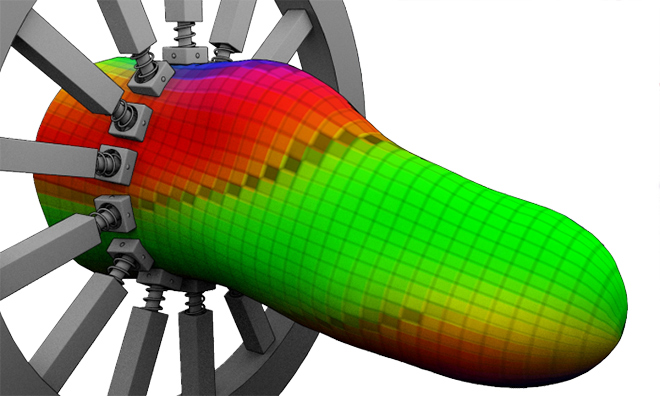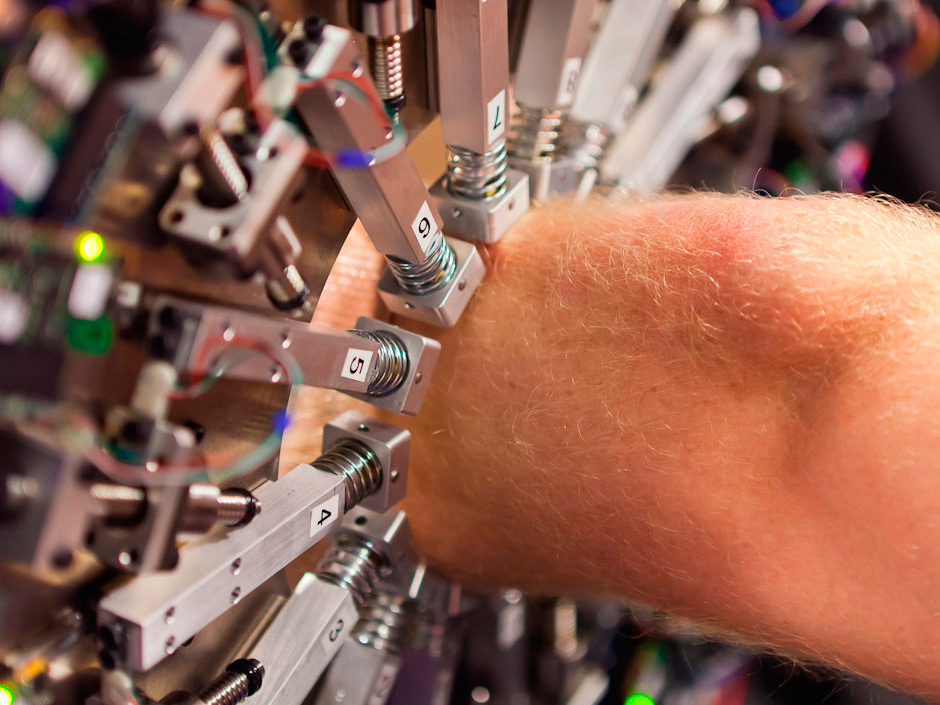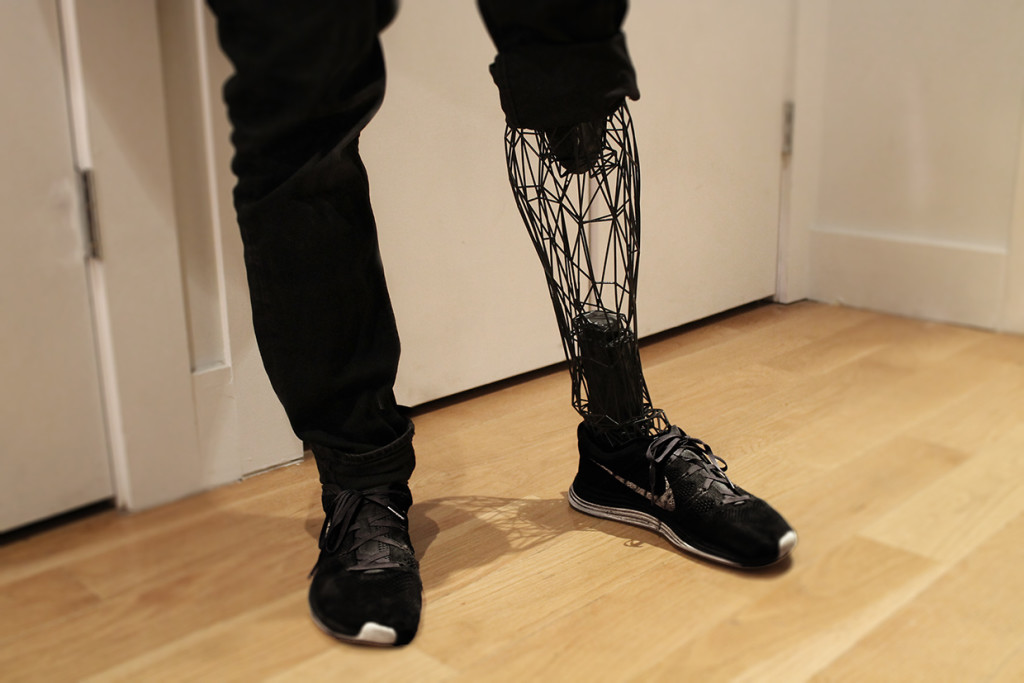Prostheses enable patients to regain their freedom and much of the functionality they had lost. At the same time, they help to restore the amputees spirit and help with the psychological recovery from having lost a part of oneself.
Prostheses have extremely prohibitive pricing in part due to the complexity of the mechanisms within them but largely due to the significant amount of specialized labor that goes into customizing them to each patient.
By nature of how they are manufactured prostheses have a very mechanical and robotic feeling to them, negatively affecting the appearance and psychological well-being of the amputees who need them.
The Exo Prosthetic use modern technologies to facilitate and streamline the prosthetic manufacturing process. Using a combination of a 3D scanner and 3D printer and complex 3D modeling software, the entire process can be automated to create a more precise, customization and affordable prosthesis.
3D Scanning

A combination of scanning technologies can create a precise virtual model of the patient’s residual limb and if present the remaining intact limb.
Laser Scanner
The prosthetic limb is constructed to identically match an reversed laser scan of the remaining intact limb allowing the anatomy to match up to the original within millimeters.
Fit-socket
The Fit-socket is a technology developed by the Biomechatronics lab at MIT. It captures let tissue properties allowing a better fit between residual limb and socket.
3D Software

Modeling
The scans of the intact let, residual limb and off-the shelf prosthetic mechanisms are combined in a 3D mesh model to create the raw model of the prosthesis.
Customizing
To reduce weight, the limb is hollowed out into an exo-skeleton with a custom pattern on the surface to match the clients aesthetic and fashion.
3D Printing

The finished model is sent to a 3D printing facility and printed out of Titanium, an extremely durable, lightweight, and biocompatible metal. Titanium dust particles are fused together in a process known as Lased Sintering. The resulting print is immediately ready for assembly.
Assembly
Using custom connectors 3D printed directly into the prosthesis, off the shelf prosthetic components are inserted into the prosthesis. Using a standard pyramid connector, they securely assemble together allowing a final option for the fine-tuned adjustments.
Exo Prosthetics Legs

by bypassing the traditional standards and methods of customizing a prosthesis through the use of modern automated digital technologies, the Exo is able to be much more than the average prosthesis.
Affordable
The Exo automates the process of producing prosthetic let. By using 3D scanners and printers, the cost of the prosthesis is reduced to the cost of the material itself.
Beautiful
By replacing the myriad of parts and connectors in a traditional prosthesis with a single 3D printed exoskeleton, the leg no longer becomes a robotic and inhuman compilation of parts but rather a customizable intimate addition to your body taking on your form.
Source : biomech.media.mit.edu & behance.net